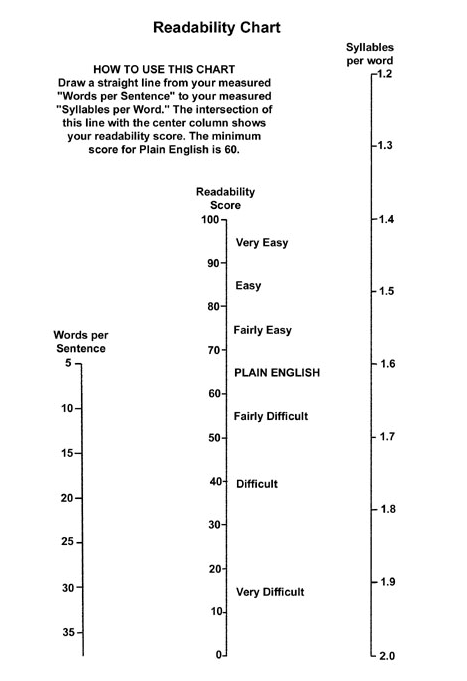


The least readable scientists are economists (Flesch score = 41.70), psychologists (42.25), chemists (42.81), and mathematicians (43.35). According to this study, the most readable articles are about sportspeople and entertainers (actors and actresses), while the least readable articles are about scientists and philosophers. Leah Borovoi also calculated the Flesch score for 2000 articles about people on Wikipedia. Readability of newspaper content (by topic and by newspaper) has been measured on a big-data scale, showing strong topic-readability correlations. The average Flesch score for Harry Potter was 72.83, with the highest score (81.32) for Harry Potter and the Philosopher's Stone and the lowest score (65.88) for Harry Potter and the Order of the Phoenix. Leah Borovoi from the Infinity Labs has calculated the Flesch score for the seven Harry Potter books that were located at the Glozman Website. (Most of the 50 used words are monosyllabic "anywhere", which occurs eight times, is the only exception.) Seuss comes close, averaging 5.7 words per sentence and 1.02 syllables per word, with a grade level of −1.3. The lowest grade level score in theory is −3.40, but there are few real passages in which every sentence consists of a single one-syllable word. Due to the formula's construction, the score does not have an upper bound. By creating one-word strings with hundreds of random characters, grade levels may be attained that are hundreds of times larger than high school completion in the United States. The grade level formula emphasizes sentence length over word length. The different weighting factors for words per sentence and syllables per word in each scoring system mean that the two schemes are not directly comparable and cannot be converted. The sentence, "The Australian platypus is seemingly a hybrid of a mammal and reptilian creature" is an 11.3 as it has 24 syllables and 13 words. The result is a number that corresponds with a U.S. The formula for the Flesch reading-ease score (FRES) test is: Ģ06.835 − 1.015 ( total words total sentences ) − 84.6 ( total syllables total words ) In the Flesch reading-ease test, higher scores indicate material that is easier to read lower numbers mark passages that are more difficult to read. This is now a common requirement in many other states and for other legal documents such as insurance policies. state to require that automobile insurance policies be written at no higher than a ninth-grade level (14–15 years of age) of reading difficulty, as measured by the F–K formula.
#Flesch readability scale word manuals#
The F–K formula was first used by the Army for assessing the difficulty of technical manuals in 1978 and soon after became a United States Military Standard. Navy research directed by Kincaid delved into high-tech education (for example, the electronic authoring and delivery of technical information), usefulness of the Flesch–Kincaid readability formula, computer aids for editing tests, illustrated formats to teach procedures, and the Computer Readability Editing System (CRES). "The Flesch–Kincaid" (F–K) reading grade level was developed under contract to the U.S.


 0 kommentar(er)
0 kommentar(er)
